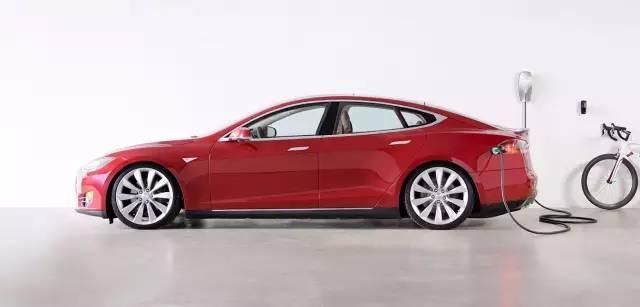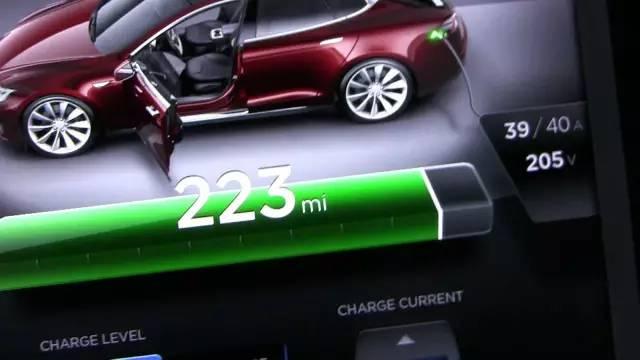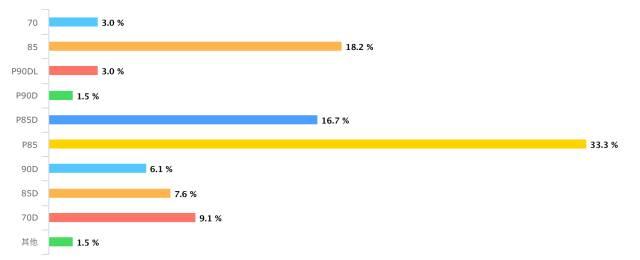
Since the delivery of the first Model S in 2012, Tesla’s battery pack has been iterating, except that the average owner does not know much about it.
If you happen to be a car owner, you can pick up the head of the car battery and look at a string of codes, such as 1071941-00-C, which means that you are buying a Tesla Model X 90D. The previous Arabic numbers indicate the capacity, and the following letters indicate the battery version.
At present, Tesla's battery versions are A, B, C, and D. In China, the battery of most car owners is D, and the battery of Model X is C. According to the ranking, the battery with the larger letter number has more advanced performance. For example, the maximum charging power of A-type batteries is 90 kW, while B-type batteries can support 120 kW with improved cold systems.
Newer models of batteries can support greater charging power. D models can support up to 135kW, or even 150kW (?).

After simply understanding the basic background, we get to the point.
Recently, at the Tesla Motorsports Association, a domestic car owner launched a battery decay survey. Up to now, a total of 66 real owners have provided reference data. The survey was carried out around three parameters: mileage, nominal mileage when the car was brought up, and the rated mileage of the current full electricity.
Here to talk about the two calibration methods Tesla battery: Rated Range (Rated Range) and Typical Range (Typical Range). The former must be numerically larger than the latter. Why are there two ways to calculate mileage? This is actually Tesla's calculation based on different models and according to regions.
For example, in the Asia-Pacific region, the Model S 70D has a rated mileage of 155Wh/km; a typical mileage is 195Wh/km. In general, the typical mileage is 0.8 times the rated mileage.
As we all know, the typical mileage is closer to the actual range of life, and the rated mileage is basically an ideal value calculated based on the ideal state of electricity. Is the typical mileage calculated by software learning based on the user's driving habits?
Obviously not. The two calibration values ​​are also different when the new car is introduced. It is wrong to say that a typical mileage is a value obtained by learning a user's driving behavior based on a software algorithm.
The mileage that is truly based on the user’s driving behavior, called the Projected Range, can be found on the Tesla dashboard. Because, predicting the life of this matter, only take the nearest energy consumption data, there is only reference value; take a few weeks, a few months is not reliable.

Then the question is, why Tesla has two mileage standards? This is in fact the same as NEDC and EPA's mileage test standards for electric vehicles, and it is based on different environments. NEDC (European working condition cycle) is more ideal and the measured cruising value is larger; the EPA (United States Environmental Protection Agency) is more rigorous, and the measured data is lower, but it is closer to the true value.
To be sure, the relationship between the nominal mileage and the typical mileage is similar to the NEDC and EPA data, but it is not the true NEDC and EPA data for one Tesla model. Rated and typical, Tesla is specifically set according to the environmental conditions such as road conditions, air temperature, and humidity in different regions.
In the Asia Pacific region and North America, there are differences between the two figures for the rated mileage and the typical mileage. However, the latter is about 0.8 times that of the former and it is the same.
Return to the statistics of battery attenuation. Compared to the typical mileage at the time of pick-up and the typical mileage after tens of thousands of miles of travel, is this drop in mileage due to battery decay?
Here again to discuss the attenuation of the battery. Attenuation is inevitable for any rechargeable battery. With the increase in the number of charging cycles, the positive and negative electrode materials in the battery will be lost, and the performance of the electrolyte will also decrease, resulting in the actual battery power reduction.
In general, for example, a lithium-ion battery with a relatively chemical nature is used. After 500 charge cycles, the battery capacity is reduced to about 80%. Note that there are 500 complete charge-discharge cycles, which means that the chemical substance in the battery completely changes from one form to another (that is, the complete transfer of electrons) and then changes back. This is called a cycle. Therefore, 500 cycles do not represent 500 charges.

From this statistic, we randomly selected several car owners' data for analysis. such as:
Owner JW's Model S P85D has a total mileage of 44,000 km, and the typical mileage has dropped from 405 to 389, with a 16 km drop. 44,000 km, about 110 fully charged, consumes 9350 kWh of electricity. This is far from the 20% attenuation standard. With a rough calculation, the car attenuates by 3.95%.
Of course, such calculations are not rigorous. For the huge ternary lithium battery system consisting of 7,102 cells, it is not that simple to calculate the decay rate; however, 3.95% also has reference value.
In short, after the 44,000 km, the P85D battery pack will definitely be attenuated. According to the current situation, the attenuation is within a reasonable range. Of course, as mentioned above, due to different models of different generations, the battery has a slight difference, combined with the user's different usage habits, there will be differences in the degree of attenuation of the battery.
In the limited survey results, the largest attenuation was 33 km and the attenuation was 8.25%. The vehicle travels 42,000 km and the model is P85. And we have found a phenomenon that the same mileage, the battery of the four-wheel drive model, the degree of attenuation is less than the rear drive version. This may be due to the better optimisation of energy consumption in the 4WD models, which makes the motors and batteries all in the best working range, so the battery attenuation is also relatively small.

It can be seen that the rear drive version has slightly higher attenuation than the four-wheel drive version under similar mileage. Despite these reasons, it is still to be seen whether this is a common phenomenon.
In short, after tens of thousands of kilometers of driving, Tesla's battery did experience slight attenuation. However, this degree of attenuation does not have much impact on daily car use. It can be predicted that in the next 40,000 or 50,000 kilometers, the battery will further attenuate and the speed will increase.
At present, Tesla is constantly iterating on its technology for battery capacity. Overall, capacity increases at a rate of 5% per year. At present, the maximum capacity of a single battery pack is 90 kWh. Previously, German media discovered an optional 120kWh model on the Tesla website.
In fact, Tesla's method of increasing battery capacity is not simply superimposing battery packs. Instead, silicon is gradually added to the original graphite anode. The mystery inside, waiting for our next article to analyze!
.wxdigi { padding:20px 0; border-top: 1px dotted DBDBDB; }